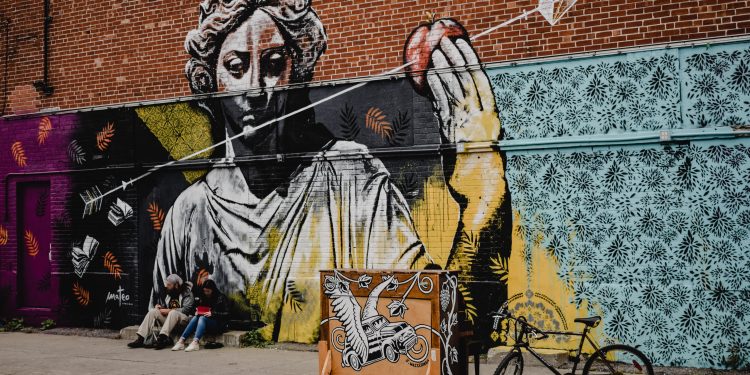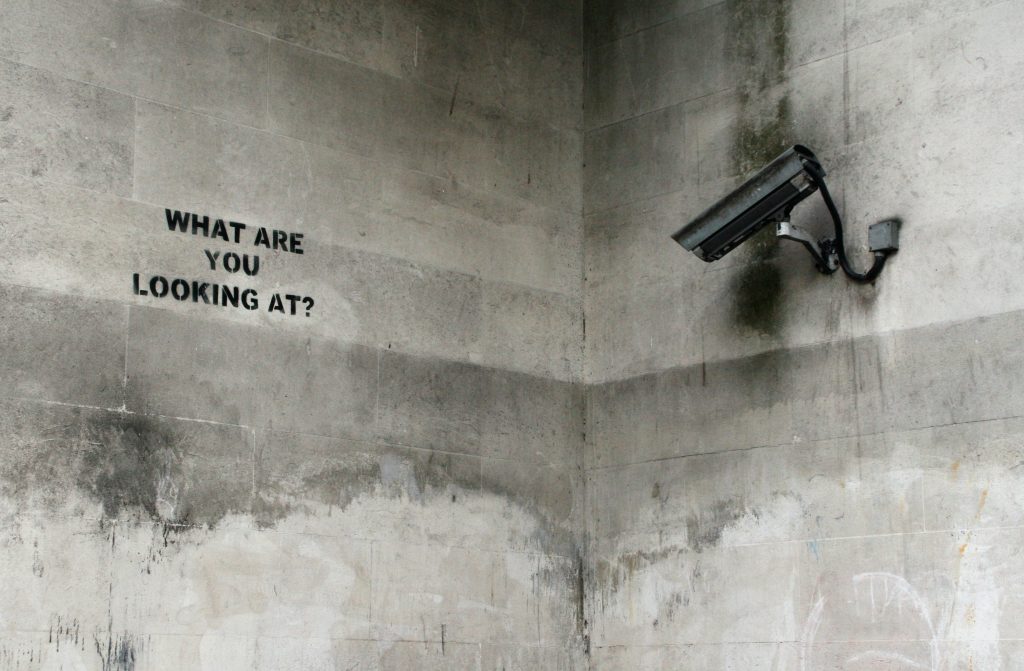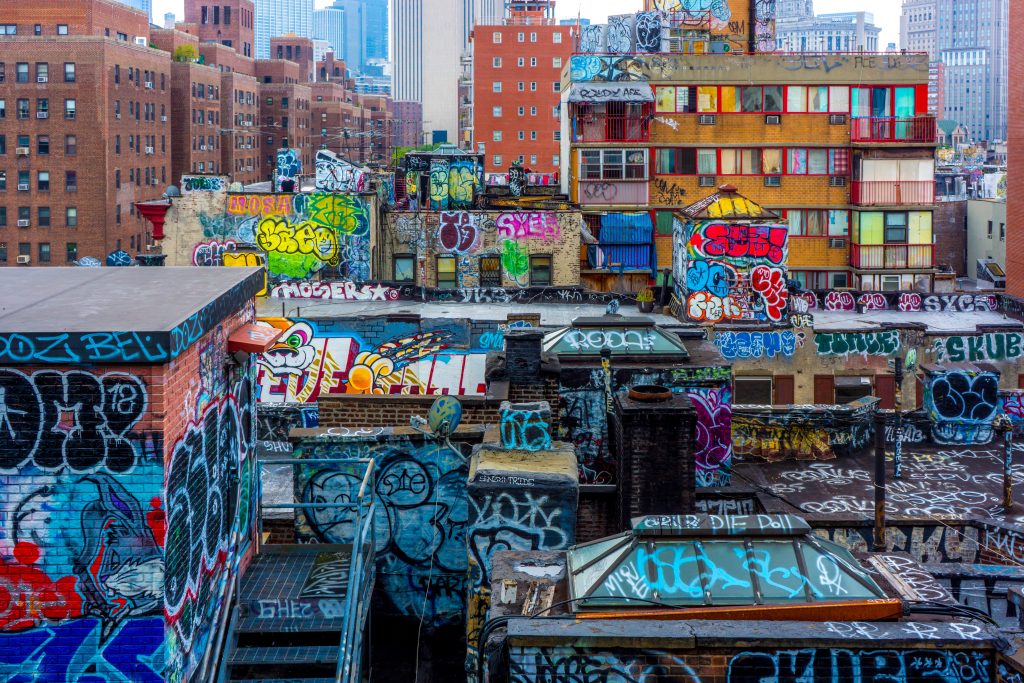Graffiti: Art or Vandalism?

There are a few debate topics that consistently seem to polarise people vehemently and vocally. Does pineapple go on pizza? How many holes does a straw have? Is a hot dog a sandwich or its own thing entirely? There is however, one that appears to be as timeless and divisive also having real-life implications that affect the world beyond one’s Italian restaurant orders; Does graffiti count as art or is it vandalism?
Many believe that aerosol-based painting isn’t on the same elevated art level as mediums like oil painting or bronze sculpture. However, hundreds of high art galleries worldwide have showcased spraypainted works amongst their Picasso’s and Matisse’s.
Some argue that graffiti constitutes property damage and should always be considered illegal, while others believe that using creativity is a legitimate, effective and non-violent form of protest. There are entire street cultures dedicated to their definition of large-scale, advance-planned graffiti work. Others still hear the word “graffiti” and think only of unpleasant phrases scrawled hurriedly on walls. There are many conflicting views around the medium, and while we can’t promise we’ll change your mind, we think it might be worth taking a closer look at the whole thing before we make up our minds.
What is graffiti?

Generally, graffiti is defined as “art that is written, painted or drawn on a wall or other surface, usually without permission and within public view.” It can range from simple scrawled words, executed in a matter of seconds, to large and elaborate pieces that can span the entire sides of buildings.
Though widely considered a contentious topic today, graffiti has been around for millennia. If you think about it – aren’t cave paintings art drawn on a surface without permission, in public view?
In ancient times, graffiti was usually carved into walls with sticks and sharp objects or painted onto surfaces using plant and animal-based dyes and marking materials.
However, as technology evolved, so did our painting techniques, and modern-day aerosol graffiti was born in the middle of the 20th century as these paints became more available. The first examples of sub-cultures adopting graffiti into their identity were the punks in the 60s and 70s, who used aerosols to spread their anti-establishment messages in public places. Aerosols put them at a distinct advantage because they could work fast and run away without getting caught!
In the 1980s, graffiti became a popular medium of expression amongst the urban youths of hip hop. In New York City specifically, graffiti and hip hop intertwined to become an audiovisual representation of the disenfranchised, disgruntled youth. As graffiti became more popularised, it became more commercialised, too! Companies and commercial spaces began to recognise its inherent “coolness” and “edginess,” and invited graffiti artists to participate in creating paid visuals for campaigns and commissioned surfaces.
Why do people do graffiti?

Like all art forms, people create graffiti pieces for several reasons, so the intention behind it will vary from piece to piece. For most modern graffiti artists, the practice is one of unique personal expression. Many graffiti painters, especially those who do large-scale pieces without permission, protect their identity by remaining anonymous and staying hidden. This anonymity allows them to express their true feelings and intentions in a public space without fear of being judged by others, which is an intensely appealing concept for some. A great example of this is Banksy, a guerilla street artist that’s world famous for anonymously critiquing society through their graffiti!
More nefariously, graffiti can also be used for territorial purposes. In some neighbourhoods, specific markings denote certain group presences and act as signs to other groups whose “turf” it is. While gang-related graffiti loosely falls under the umbrella of “art,” the wider community generally does not regard this as legitimate graffiti.
Similarly, on the fence is “tagging,” a practice whereby an adopted “tag” or nickname is scrawled onto a surface in an individual’s distinctive style. This is almost like leaving a signature in a guestbook, proving the artist has been somewhere. Though less shunned from the community than gang graffiti, some believe this gives street artists a bad name and doesn’t necessarily contribute any artistry to a space.
One purpose of graffiti that we saw in South Africa during the protest movements at the height of apartheid was political, radical and protest graffiti. Messaging in public spaces, such as in headlines and on billboards, costs money. Often, oppressed groups don’t have access to money, so the only way to get their voices heard in public forums was to illegally spray out phrases and statements that really resonated, connecting the silent majority in solidarity when they couldn’t do it out loud.
Many South African resistance artists in the 1970’s made prolific use of stencils to anonymously share messages of hope and resilience in their communities or spread the word of meetings through coded messaging.
I’m interested in doing graffiti! What now?

Firstly, we must clarify that we do not endorse illegal activities and vandalism. If you’d like to practice this, there are spaces in communities across South Africa where graffiti is welcomed and encouraged. And legal. Don’t go get arrested and tell the SAPS it’s because a stationery shop said it was ok, ok?!
Once you’ve located a legal practice space, it’s as simple as giving it a go! Most graffiti artists are entirely self-taught, so you’ll be amongst great company if you just try. If you want an elementary introduction, try looking at YouTube channels like Graffiti Blog.
All you’ll need are aerosol paints in your chosen colours from your nearest PNA store (which you can locate using our Store Locator ), and you’re ready to go! Remember to have fun – that’s what this is all about!
Do you think graffiti is art? Vandalism? Both? Neither? Come join the conversation on our Instagram and Facebook! We’d love to hear what you have to say!


